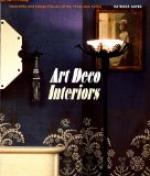{ of a great Roman Emperor. As we have said,
{ he had been in Rome and he had been in Egypt;
{ the art of the French Empire was reminiscent
{ of both. Napoleon would outstrip the other
{ conquerors of the world.
{Some Empire furniture shows the same fine
{ turning which characterizes Jacobean furniture
{ of both oak and walnut periods. We refer to
{ the round, not spiral, turning. See legs of
{ Empire sofa on which Madame Recamier reclines
{ in the well-known portrait by David (Louvre).
ENGLISH FURNITURE
{Gothic,
through 14th Century.
THE OAK PERIOD {Renaissance, 16th Century.
(including early {Elizabethan, 16th Century.
Jacobean) {Jacobean or Stuart, 17th
Century; James I,
{ Charles I and II, and
James II, 1603-1688.
{Late Jacobean.
THE WALNUT PERIOD {William and Mary, 1688.
{Queen Anne, 1702.
“MAHOGANY” PERIOD {Chippendale.
{18th Century.
(and other imported {HEPPELWHITE.
{
woods), or {SHERATON
{
CHIPPENDALE PERIOD. {THE ADAM BROTHERS.
{
{Almost no
furniture exists of the 13th
{ Century. We get
the majority of our
GOTHIC PERIOD, { ideas from illustrated
manuscripts of
Through 14th Century. { that time. The furniture
was carved
{ oak or plain oak ornamented
with
{ iron scroll work, intended
both for
{ strength and decoration.
RENAISSANCE OR {The characteristic, heavy,
wide mouldings
ELIZABETHAN, { and small panels,
and heavy round
16th Century. { carving.
{Panels large
and mouldings very narrow and
{ flat, or no mouldings
at all, and flat
{ carving. The classic
influence shown during
JACOBEAN OR { the period of the Commonwealth
in designs,
STUART PERIOD, { pilastars and pediments
was the result of a
17th Century. { classic reaction, all
elaboration being
{ resented.
WALNUT PERIOD, {The Restoration brought
in elaborate
late 17th Century. { carving. Dutch influence
is exemplified
{ in the fashion for inlaying
imported from
{ Holland, as well as the
tulip design.
{ Turned legs, stretchers,
borders and spiral
{ turnings, characterized
Jacobean style.
In the GOTHIC PERIOD (extending {
through 14th Century), as {
the delightful irregularity in {
line and decoration shows, {Tables,
chests, presses (wardrobes),
there was NO SET TYPE; each {
chairs and benches or
piece was an individual creation {
settles.
and showed the personality {
of maker. {




